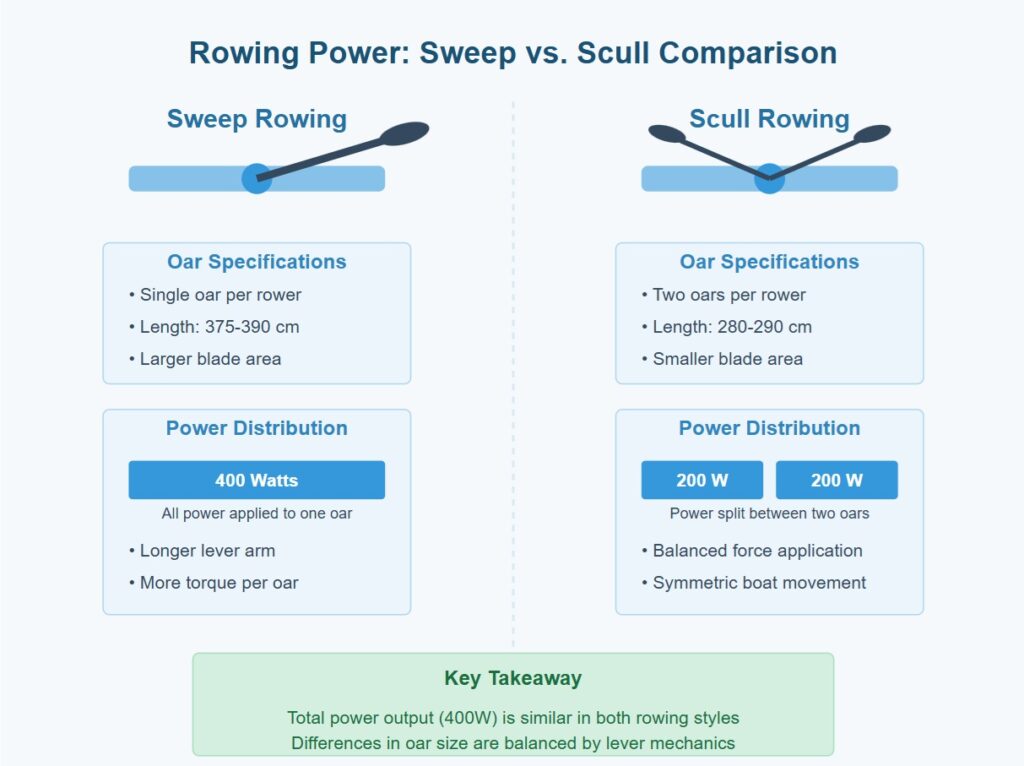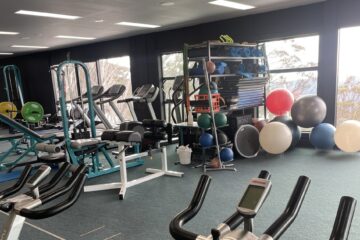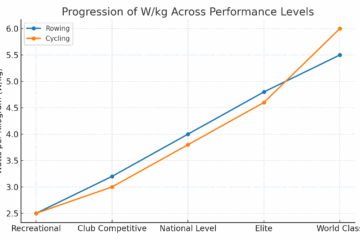In this short article, I thought I would cover an interesting question I was recently asked about sweep boats versus scull boats. The question boiled down to energy required to move the boat: considering that sweep oars are larger than scull oars, does it require more power to get the same wattage output? So I did what anyone would do and asked AI to get to the bottom of this. As expected, there isn’t much difference, if any, between the power required for both types of rowing.
To understand why, it helps to first look at what determines power output in rowing. Power is the product of force applied and the speed at which it is applied—think of it as how hard and how fast you pull on the oar. This power depends on how much force a rower can generate, how long their stroke is, and how quickly they complete each stroke. Whether you’re using one sweep oar or two sculling oars, the total power you produce is fundamentally about your physiology and technique, not just the size of the oar.

Sweep rowing involves each rower handling one longer oar with a bigger blade, usually around 375–390 cm in length, while sculling involves two shorter oars with smaller blades, around 280–290 cm each. Intuitively, you might think the larger sweep oar would require more power to move, but that’s not the case. The longer sweep oar creates a longer lever arm, allowing the rower to generate more torque, essentially turning more force into rotational power around the oarlock. However, since the rower uses only one oar in sweep, the overall power they apply is balanced against the shorter strokes and smaller blades of sculling, where each hand pulls on a separate oar.
To put this in perspective with some numbers, consider an elite rower producing about 400 watts of power during a 2,000-meter race. Whether sculling or sweeping, that athlete’s power output will be roughly the same. In sweep rowing, the force is concentrated into one oar, with a larger blade pushing more water per stroke, while in sculling, that same 400 watts is split between two smaller blades, each pushing less water individually but combined producing equivalent thrust. In either case, the boat’s speed and efficiency are primarily governed by how effectively the rower can convert metabolic energy into mechanical power and how well the boat minimizes drag.
Another important factor is balance and stability. Sculling applies forces symmetrically on both sides of the boat, which tends to reduce energy lost in corrections and helps maintain a straighter course. Sweep rowing, on the other hand, produces asymmetrical forces that the crew must counteract to keep the boat moving straight, which can slightly increase energy expenditure on steering and balance. Despite this, sweep rowing crews compensate with technique and synchronization, resulting in comparable overall efficiency.
In conclusion, from both a physics and practical standpoint, sweep oars don’t inherently require more power than scull oars. Both systems enable rowers to apply their strength effectively, and the differences in oar size and leverage are balanced by the number of oars and the distribution of forces. So whether you’re watching a single sculler or an eight in full flight, the power behind the boat is really about the athlete, not just the oar.



0 Comments